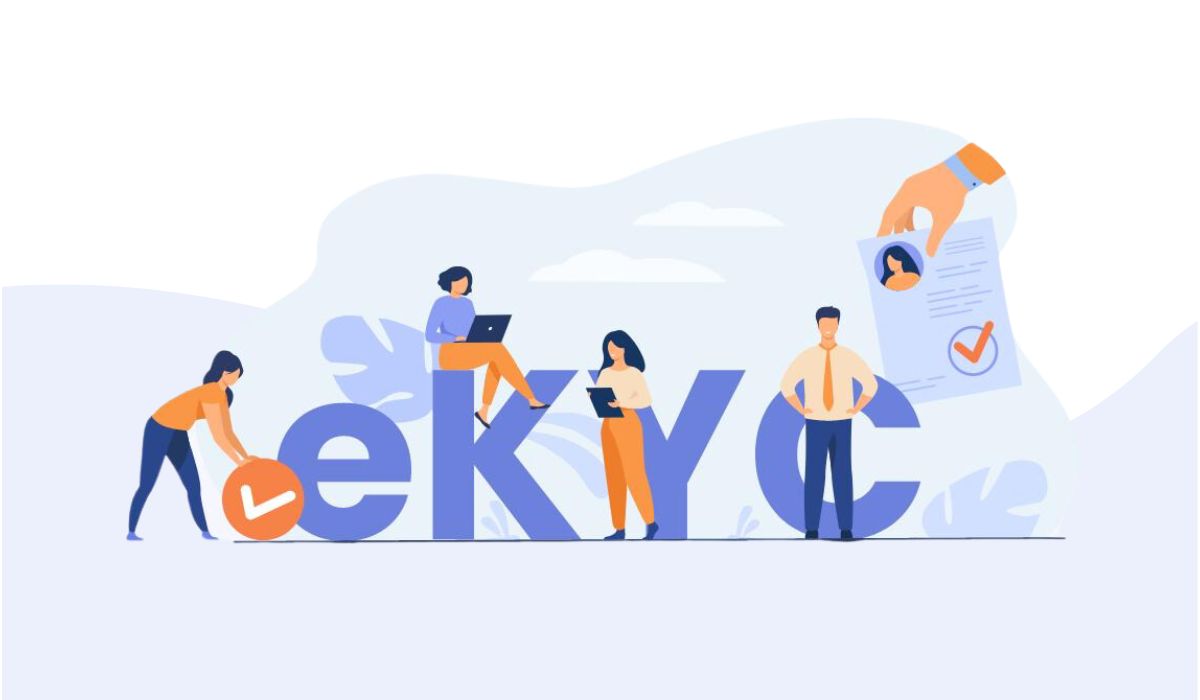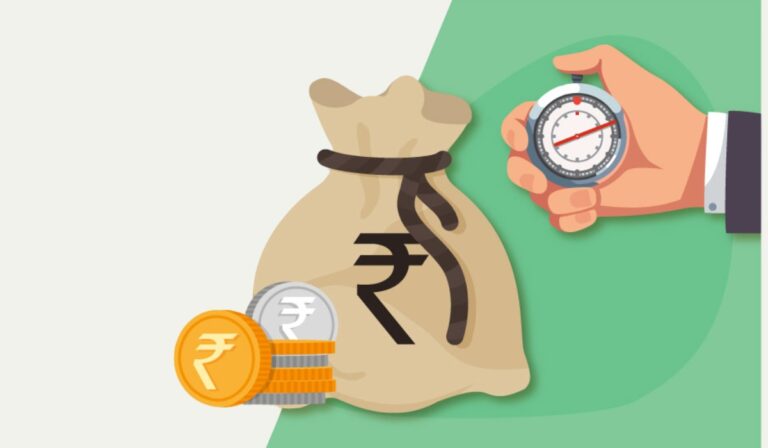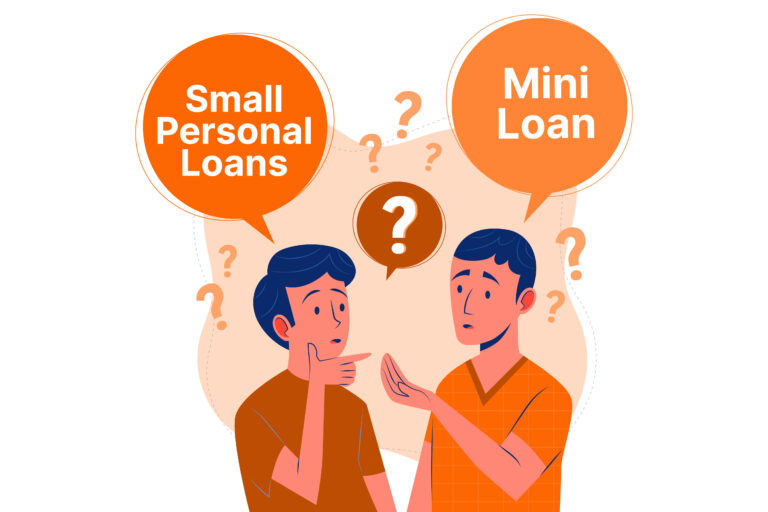E-KYC is a government-devised ingenuity that allows people to completely digitise their KYC obligations. With identity theft and fraud nearing criminal ascendancy, e-KYC is an automated contrivance with only the highest thresholds of encryption that ensures zero breach of security as opposed to its offline counterpart. Arguably, the best feature of E-KYC is that it is procedurally far from abstruse and can be completed with a few steps. To properly understand the intricacies and the ins and outs of E-KYC, read on.
What is E-KYC?
E-KYC is a completely digitised process of authenticating one’s identity. It is completely remote, automated and paperless, and streamlines your verification process to a great degree. As opposed to a standard offline KYC protocol, E-KYC saves you the hassle of physically carrying a large repository of documents to a designated centre, some of which might even be relatively immaterial to you otherwise. E-KYC works in one of two ways; biometric authentication or through an Aadhar OTP. The biometric pathway works by verifying your basic biometric data (fingerprint and retinal scan) by comparing them to the biometrics taken at the time of your Aadhar application.
The OTP pathway involves sending a one-time password to the mobile number linked to your Aadhar card number, which post-disclosure completes your verification process.
Thus E-KYC is completely paperless and online and provides paramount layers of security to make sure your sensitive identity information is not shared with any unauthorized party.
Why is e-KYC important?
With financial crimes and misdemeanors perpetually on the rise, it has become ever more important for financial and lending institutions to properly gauge the authenticity of the identity of their customers. With E-KYC’s added security features, it has greatly reduced the overall monetary risk of the financial infrastructure of our country. In the same vein of thought, it is also intrinsically important for telecom companies and service providers to properly ascertain the identities of their potential customers. If a SIM card is issued to a person with differing credentials, it basically would provide a potential con to carry out crimes incessantly, secure underneath the sheath of a false identity.
Moving away from the security aspects of the E-KYC protocol, its efficiency in saving time is also apparent. E-KYC can be done timely with the execution of a few simple steps, whereas the normal KYC protocol would potentially take up to a week for its completion. E-KYC is also completely paperless, typically requiring you to furnish only your passport-size photographs at the time of verification. The requirement for any other extraneous document would be explicitly mentioned on the service provider’s website.
What is the List of Documents Required for e-KYC Verification?
Since E-KYC is completely paperless, it doesn’t require you to carry any documents other than spare copies of your passport-size photographs. With due authorization, your service provider accesses your credentials electronically from the UIDAI website. The UIDAI is also the issuing body of your Aadhar card, and hence it has a database of credentials of every person with an Aadhar card. Hence, UIDAI provides the service provider with your basic details such as name, address, date of birth, mobile number etc. Upon reception, the service provider then categorically ascertains your identity, making the entire process seamless and paperless.
What are the Eligibility Criteria for the e-KYC Process?
To be eligible to apply for an E-KYC process, you should be an Aadhar card recipient and have a unique Aadhar number. This is requisite as your Aadhar contains all your credentials and biometrics, all of which have been hitherto duly verified. Hence, if you don’t have an Aadhar card or have an Aadhar with outdated credentials it becomes imperative for you to apply and get your Aadhar first before you become eligible for any E-KYC service.
Kinds of Aadhaar E-KYC
There are mainly two types of Aadhar E-KYC –
- online Aadhar E-KYC
- offline Aadhar E-KYC
Though the methodologies of these types are self-explanatory, the nuances associated with each method are worth pointing out.
In the offline method, instead of a barrage of different documents, you download a single document named ‘offline Aadhar XML’, which is electronically signed by the UIDAI. This document can be directly downloaded to your device and negates the need for printers or photocopiers. This XML document contains your basic credentials such as name, address, DOB etc. Service providers can complete your E-KYC process by referring to the data in this document. An important security feature associated with this method is the presence of a ‘share phrase’, without the possession of which your XML document can’t be accessed. This share phrase ensures that you share your sensitive information only with authorised parties. Thus, the offline Aadhar E-KYC protocol provides heightened thresholds of privacy, security, accessibility and convenience.
The online gateway provides two gateways of verification:
- Using biometrics
- Using OTP Authentication
Using Biometrics:
If you opt to have your E-KYC verification done via your biometrics, you must provide your Aadhar card to the service provider, following which they will note down your Aadhar number. After all this is done, they will send over a representative to capture your fingerprints and take a retinal scan. This biometrical information is then matched to the biometrics already associated with your Aadhar. Upon the successful matching of the two sets of biometrics, your verification process is completed.
OTP OTP Authentication:
If you opt for the OTP authentication protocol, you will be required to hand over your Aadhar to the service provider. The service provider then notes down your Aadhar number. Subsequently, you will receive an OTP on the phone number associated with your Aadhar number, following disclosure completes your verification process.
How Can I Check My Online E-KYC Status?
Checking your online E-KYC status typically involves entering your PAN details. This step is constant of the KYC Registration Agency (KRA) you have subscribed to.
Following is the list of SEBI-recognized KRA’s:
-
- NSE KRA
- Karvy KRA
- CVL KRA
- CAMS KRA
- NSDL KRA
What are the Benefits of Aadhaar e-KYC?
E-KYC being paperless, ensures smooth automation and end-to-end encryption. It does not ask for any extraneous information, as well as information which may be used for criminal incrimination. The security involved with this protocol is of the paramount level, disabling the transmission of sensitive information through unauthorized third parties. It brings about improved security, speed and accuracy, making it an indispensable tool for financial and telecom institutions.
Understanding Offline e-KYC
The different methods of conducting your E-KYC offline are listed below:
-
QR Code Scan
- The back of your Aadhar card has a QR code affixed which has all your Aadhar credentials stored magnetically. The scanning of this QR then reveals your personal details such as name, date of birth, photo and residential address. This method avoids the revelation of your unique 12-digit Aadhar number which is essentially privileged information. This QR code is electronically signed by UIDAI, hence ensuring its Genuity.
-
Aadhaar App
-
- In the near future, you will also be able to perform your E-KYC obligations via the mAadhaar mobile app. At the time of writing, the E-KYC protocol can be performed via the mAadhar website.
Applying for KYC Online
To apply for a KYC online, go to the website of any KRA. Select one of the various KRA forms like NDML, CAMS etc and plug in your Aadhar details. Enter the OTP sent to your registered mobile number and then click on submit. Once UIDAI verifies your details, the KYC is approved by the KRA and you can check its details by logging in with your PAN details.
How to Change KYC Details Online?
To change your KYC details, log in to your KYC portal with your portal and search for the update KYC option in the settings.
This option takes you to the page which can update your details. Preferentially make the changes you require by uploading the latest copies of the requisite documents. Once you have made the changes, complete the verification process by entering the OTP sent and then click submit. Your application for a KYC update will then be reviewed and you will be duly notified in a few days.
Thus, to summarize this transcript, we can infer that E-KYC is a game-changing verification protocol which ensures seamless automation, and has apex levels of security, privacy and accessibility. Thus, it becomes imperative to properly study its nuances to streamline your KYC process with any service provider.
Also, check:




